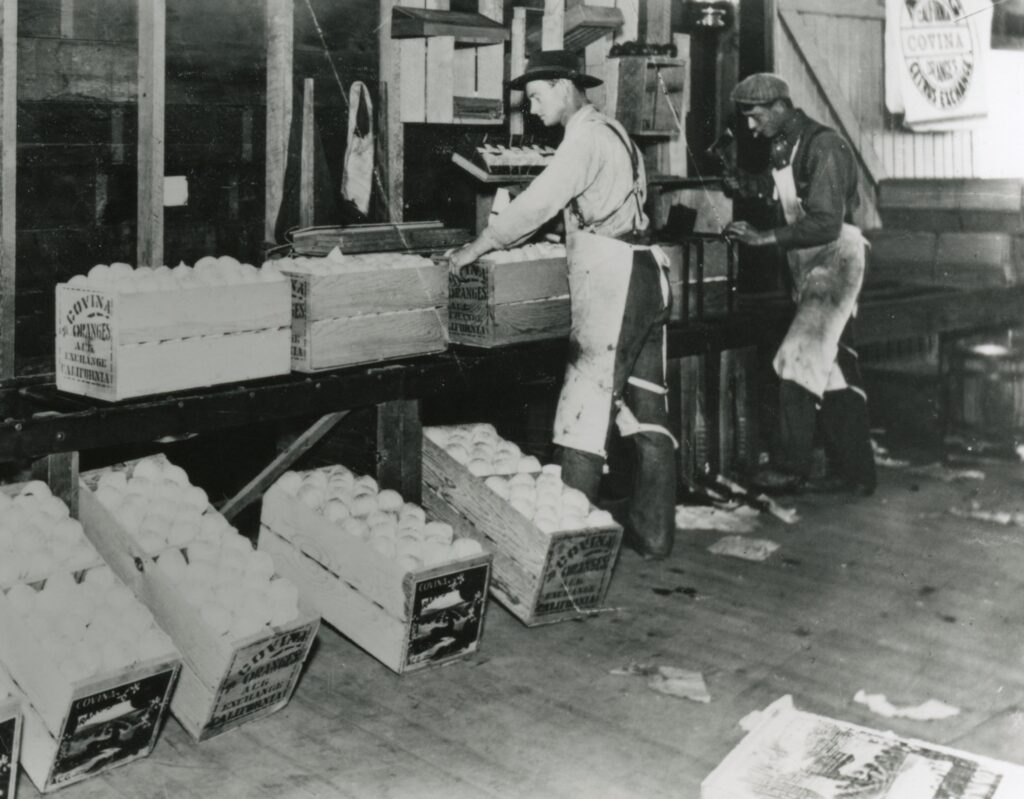
Last week we delved into the Wolfskill family’s influence on the citrus industry. By the 1880s, in one way it was flourishing and in others floundering. The growers were producing great quantities of fruit. That fruit was in great demand back east. The development of additional transcontinental railroad lines provided access. Refrigerated railroad cars delivered the fruit in good condition. The problem was actually selling the fruit!
Haphazard distribution, unscrupulous agents and disastrous prices were threatening growers’ livelihoods. Brokers, upon whom the growers were dependent, worked on a commission basis with agents in the East. Growers paid a handling fee of fifty cents a box—whether or not the oranges sold. They had no control over where the fruit was sent. As a result, some markets were flooded with citrus while others left waiting. It was a marketing nightmare.
Cooperatives provided the answer. Several small groups of growers banded together to market their fruit. Some, like Claremont Fruit Growers Association, did their own marketing. Others, like Pachappa Orange Growers Association, pooled their fruit instead of competing individually.
The financial depression of 1893 forced these growers’ associations to meet and discuss how they could work together to save their industry and to agree on a uniform marketing strategy. This was no easy task. They were, after all, competitors. Initially, they could not even agree on a meeting place, but finally settled on Los Angeles. In the the end it was successful.
The foundation was laid to stabilize the Southern California citrus industry. On August 29, 1893, a regional marketing cooperative was formed combining seven organizations into the Southern California Fruit Growers Exchange. It evolved to accept lemon growers, and citrus growers to the north to become the California Fruit Growers Exchange to reflect its broader membership.
In 1907, the Exchange created a subsidiary cooperative, Fruit Growers Supply Company. Fruit Growers, is a purchasing co-op to supply member growers to buy bulk supplies from fertilizers to nails, then needed for wooden boxes. Since only members of the Exchange reaped the benefit of Fruit Growers, was an enticement for other growers to join the Exchange.
Next Week: One More Hurdle: A Brand New Name
Donate